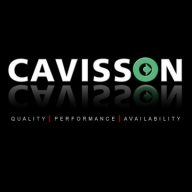

Splunk AppDynamics and Cavisson NetDiagnostics are prominent in application performance management. Splunk AppDynamics appears stronger due to its integration and visualization capabilities, while Cavisson NetDiagnostics shines with robust analytics and load testing.
Features: Splunk AppDynamics offers real-time monitoring, extensive analytics, and excellent integration for valuable insights across applications. Cavisson NetDiagnostics is recognized for performance testing, dynamic diagnostics, and predictive analytics, aiding in issue identification.
Ease of Deployment and Customer Service: Splunk AppDynamics provides an easy deployment process with comprehensive documentation and support, facilitating cross-platform integration. Cavisson NetDiagnostics offers efficient deployment but requires a steeper learning curve for system administration. Both companies provide solid customer support, but Splunk AppDynamics is often noted for faster response times.
Pricing and ROI: Splunk AppDynamics has a higher initial setup cost, reflecting its broad features and integration capabilities that offer significant ROI through detailed insights and increased efficiencies. Cavisson NetDiagnostics presents a more budget-friendly initial setup, appealing for those prioritizing load testing without extensive start-up expenses. Its pricing, combined with strong diagnostics, provides competitive ROI for specific performance enhancements.
| Product | Market Share (%) |
|---|---|
| Splunk AppDynamics | 4.1% |
| Cavisson NetDiagnostics | 0.2% |
| Other | 95.7% |

| Company Size | Count |
|---|---|
| Midsize Enterprise | 3 |
| Large Enterprise | 5 |
| Company Size | Count |
|---|---|
| Small Business | 55 |
| Midsize Enterprise | 36 |
| Large Enterprise | 188 |
Cavisson NetDiagnostics Enterprise (NDE) is a comprehensive Application Performance Management (APM) solution for real-time monitoring, diagnostics and management of distributed processing in your application environment using state of art technologies with minimal overhead. Leading Fortune 500 brands rely on NDE to avert risks, reduce revenue loss, and improve customer loyalty by enabling proactive monitoring and real-time diagnosis of application performance issues.
Splunk AppDynamics enhances application performance monitoring with advanced diagnostics and real-time insights, offering seamless end-to-end transaction tracking and infrastructure visibility.
AppDynamics provides critical tools for businesses to analyze application behavior and performance. Through innovative features like transaction snapshot analysis and adaptable dashboards, users can quickly identify and address issues, ensuring high levels of system uptime and efficiency. It is designed to support complex environments including Kubernetes and AWS, enhancing user experience by detecting performance issues early. Despite needing improvements in network monitoring and integration, it remains a robust option for tracking application health.
What are the key features of AppDynamics?In industries like financial services and e-commerce, AppDynamics facilitates performance tracking across distributed systems, optimizing infrastructure to meet consumer demands. It excels in environments needing precise transaction monitoring and is pivotal in delivering high value and satisfaction.
We monitor all Application Performance Monitoring (APM) and Observability reviews to prevent fraudulent reviews and keep review quality high. We do not post reviews by company employees or direct competitors. We validate each review for authenticity via cross-reference with LinkedIn, and personal follow-up with the reviewer when necessary.